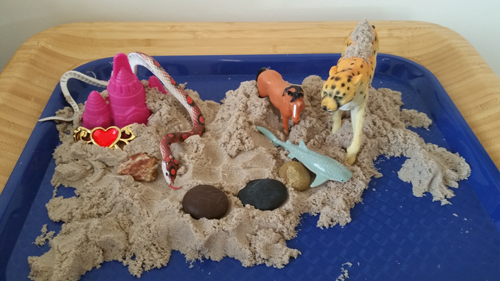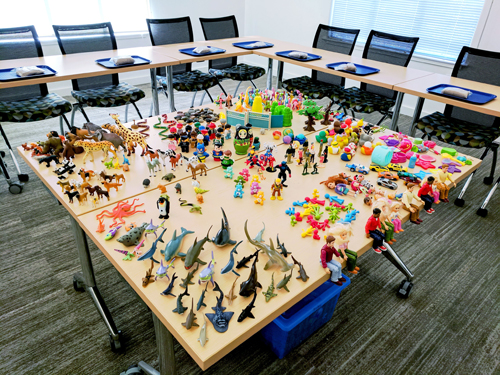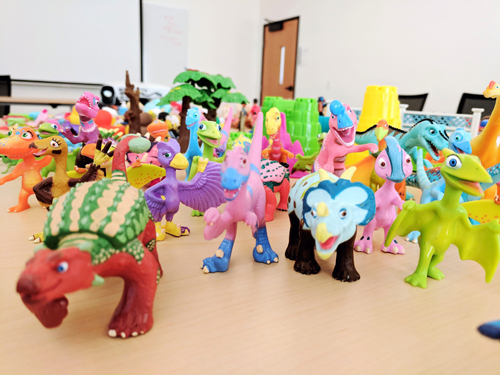
Dr. Rubio Incorporates Art Therapy and Play Therapy into Instruction
Click here to read more about Dr. Rubio's background.
Despite the dominant media representations of therapy, talk therapy isn't universal, and it isn't for everyone. Dr. Ritchie Rubio explains that talk therapy may not come naturally to some people, especially those from cultures or backgrounds that value nonverbal communication. Expressive arts therapy can also be effective with children, youth, or adults who may struggle to put their thoughts and feelings into words, especially when starting therapy. Given their effectiveness for diverse client populations, Dr. Rubio feels driven to introduce and integrate expressive art therapy modalities at The Wright Institute.
Students in his Crisis, Disaster & Trauma Counseling class have the opportunity to create "soothing boxes" using markers, pastels, and tempera paints. These boxes can help students tolerate their distress in working with clients who have trauma experiences, and they can be a tool in fighting compassion fatigue.
After almost 20 years of experience working as a clinician, Dr. Rubio has intervened with many populations where a history of trauma is a common thread among those seeking therapy. "People at times seek help because of an emotional distress that overrides their ability to process their experience verbally and cognitively. And often something has been missed as far as a diagnosis. Verbal processing is great but it's hard to talk about trauma at times. It can be easier to start out nonverbally and allow oneself to access other parts of your brain, especially those relevant to emotional processing, before you open up to more cognitive and verbal processing."
In each class that he teaches, Dr. Rubio highlights the importance of playful engagement and how difficult it can sometimes be. "You have to figure out why the client is seeking therapy. What are their perceptions about play in general? What is their history of play? How did they play as a child growing up? This can impact how the client views play and art, and other expressive arts. Sometimes when you see adults engage in play, you realize they didn't have a great play experience as children. To ease them into it, I start with things like guiding them through mindfully touching sand or paint. Adults sometimes view the sand tray as 'kid stuff' so I start out really slow."
In interacting with the sand tray, many clients feel grounded as they begin imagining playing in the sand at the beach, or watching the sand flow through their fingers. Dr. Rubio also uses the sand tray in the classroom. Each student is given their own tray and then selects from a variety of miniature figures, with which they begin their narrative and storytelling in the sand. For instance, Dr. Rubio asks the students in his Professional Development Seminar to "create a 'yin-yang' picture in the sand of their joys, excitement, as well as fears and anxieties around starting practicum." It's similar to a group therapy session; students act as the clients and get to see what their clients would be experiencing. "It's important to have the students experience it themselves. Afterwards we process how was the experience for them, what was felt, what was triggered, what insights were derived. And, it's good to have preconceived notions challenged by actually doing it."
Dr. Rubio's advice for anyone feeling burnt out on their path doing intense clinical work is to find your inner playful self. "Burnout sometimes indicates you're ready to disengage. Find another avenue of engagement that is more calming for you. Things become so heavy because you have imbibed many difficult emotions and experiences from your clients. Reignite that fun, find another avenue to pull out your playful engaging self, and hopefully that will seep into your more intense work and lighten the burden."
Click here to learn more about the Wright Institute's Doctor of Clinical Psychology (Psy.D.) program.
Click here to learn more about the Wright Institute's Master of Counseling Psychology program.
"In class, I usually tell me own story in the sand as the students do theirs." -Dr. Rubio

Students choose from a variety of toys to use in their expressive arts projects in class.


